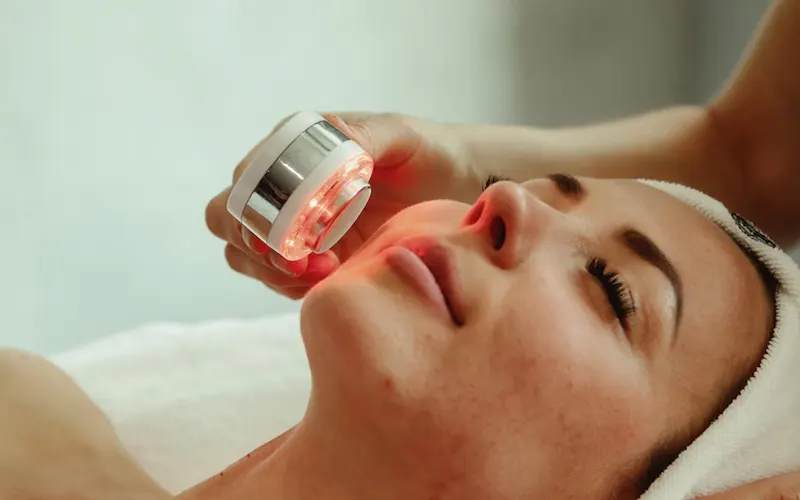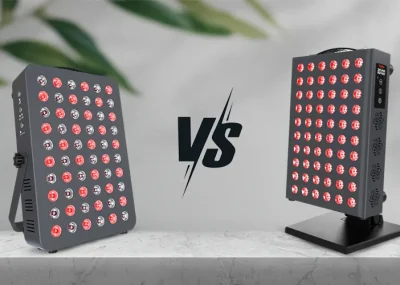Overview
People with acne need to have a proper skincare routine to help combat acne and treat the skin. In addition to skincare routines and over-the-counter medication, individuals with acne should also try light therapy devices.
At-home red light therapy tools, devices, and professional LED treatments have amazing benefits for the skin. They do help boost collagen production, improve skin firmness and elasticity, improve skin texture, and offer other anti-aging skin benefits. The combination of blue and red light therapy to the skin can help eliminate acne, prevent the formation of new acne, shrink cysts, and eliminate whiteheads and blackheads.
According to the Journal of Dermatologic Surgery by Dae Hun Shu, visible light including red light therapy is an effective solution in the treatment of mild to moderate acne. Phototherapy on the skin may help improve inflammatory and non-inflammatory lesions and acne vulgaris.
Dr. Engelman Dendy, a board-certified dermatologist in Manhattan explains that the combination of red light therapy and blue light therapy is an effective solution for acne. Dr. Dendy continues to explain that blue light works on the uppermost layer of the skin to kill any acne-causing bacteria, clear pores, and regulate oil production. Red light therapy, on the other hand, deeply penetrates the skin to reduce inflammation caused by acne.
One of the studies done by Jiahua Li and published in the Photodermatology, photoimmunology, and Photomedicine journal compares the effectiveness of red and blue light in the treatment of acne vulgaris. The study reveals that both treatments are effective and safe methods for eliminating acne. Phototherapy has many advantages with fewer side effects.
People are becoming more aware of the use of light therapy devices on the skin and its transformative effects on different skin conditions. Dr. Azza Halim, a board-certified anesthesiologist explains that different social media platforms, including TikTok, make laser therapy a popular form of treatment.
However, before using a red light therapy device, you may want to consult a dermatologist and find an effective treatment for you. In this article, we will give you details about the use of red and blue light therapy devices in the treatment of acne vulgaris. Our experts and professionals in the field have done thorough research for you. All you have to do is find yourself a device from a trusted manufacturer and use it.
Does Blue Light Therapy for Acne Work? – What Research Says
Blue Light therapy is a safe, painless, and non-invasive form of laser treatment. Blue light works on the uppermost layer of the skin to kill any acne-causing bacteria, clear pores, and regulate oil production. Blue light is free of UV rays and has mild side effects on the skin. The American Academy of Dermatology Association supports that laser therapies and other forms of light therapies are effective in the treatment of acne. While results may vary from one person to another, people who have used blue light have reported significant improvements in their acne. The acne cleared, the skin became even and clearer, and there was no formation of new acne.
The Journal of Dermatologic Science by Akira Kawada reveals that the use of high-intensity blue light therapy is efficient in the treatment of mild to moderate acne. Patients who were treated with blue light reported reduced lesions and acne in about 5 weeks.
Blue light therapy is safe when used as recommended, is drug-free, does not have adverse side effects, safe for all body parts, kills acne-causing bacteria, and does not cause skin scarring.
How Does Red Light Therapy Work to Improve Acne?
Red Light Therapy uses low-level laser technology for therapeutic benefits, anti-inflammatory effects, and wound healing on the skin. Red light therapy can help with skin conditions like severe acne, acne vulgaris, and inflammatory acne. Red light therapy uses wavelengths that deeply penetrate the skin to enhance blood circulation, reduce inflammation, and stimulate cellular activities. The process works to treat acne, and skin lesions, and enhance healing. In addition to treating acne, red light therapy has shown promise in improving the appearance of acne scars. If you want to learn more about how red light therapy can help with scars, consider exploring our article on red light therapy for scars.
The Indian Dermatology Online Journal by Susan Pei supports that the use of laser and light therapies is effective in treating acne vulgaris because it is safe with fewer complications. The study further claims that red light therapy may help with chronic inflammatory acne in adolescents and adults.
Additionally, red light therapy may help promote skin rejuvenation, boost collagen production, and prevent acne scarring after acne. A consistent regime with red light therapy may help promote wound healing and treat acne depending on severity.
 How Does Light Therapy Work for Acne
How Does Light Therapy Work for AcneThe Science Behind Blue and Red Light Therapy for Acne
One of the biggest advantages of trying red light therapy for the skin is that there is scientific evidence to back its effectiveness. The power of red-light therapy in the treatment of acne is supported by cutting-edge research. Research studies have shown that red light therapy uses light of wavelength 620nm to 720nm.
It deeply penetrates the skin into the tissues and oil glands. It works to treat severe acne, regulate oil production, reduce the appearance of scars, and prevent further outbreaks. Red light therapy may also boost collagen production and improve blood circulation.
Blue light, on the other hand, combats propionibacterium, the acne-causing bacteria in the skin. since the bacteria are sensitive to blue light, they are effectively reduced to prevent acne breakouts. In her research published in the Annals of Family Medicine, Anna Mae Scott explains that blue light therapy is an alternative method of treating acne compared to antibiotics.
 The Science Behind Light Therapy for Acne
The Science Behind Light Therapy for AcneHow Does Combining Blue and Red-Light Therapy for Acne Treatment Help?
The combination of red light therapy and blue light therapy works well to combat acne vulgaris and inflammatory acne. Red light deeply penetrates the skin to calm inflammation and enhance wound healing, while blue light works on the epidermis to kill the acne-causing bacteria. The Indian Dermatology Online Journal by Susan Pei supports that FDA-approved red light and blue light work effectively for lesions and acne when combined. Blue light has a wavelength of 415nm to work on the dermis, while red light has a wavelength of 630nm to deeply penetrate the skin.
Embracing light therapy in her skincare routine, actress Julianne Moore advocates for innovative skincare practices. Renowned for her radiant complexion, Moore attributes her skincare success to the strategic use of light therapy devices, emphasizing consistency and high-quality choices in her Julianne Moore Skincare Routine. Her commitment aligns with the growing trend of light therapy for diverse skin conditions.
Frequently Asked Questions
Can I Use At-Home Light Therapy Devices to Treat Acne?
A: At-home light therapy devices are increasingly gaining popularity in the cosmetic industry. This is because most devices and tools are portable and convenient to use in the comfort of your home. You can consult a dermatologist to help you pick the right devices and tools depending on the severity of your acne. For at-home devices, it is important that you pick clinically researched tools to ensure they are safe and effective.
Is Possible to Overdo Light Therapy for Acne?
A: No, you cannot overdo light therapy for acne. This is because light therapy is painless and non-invasive. You can use light therapy many times a week without side effects. However, there are recommendations that you need to follow when using light therapy devices. Depending on the severity of the acne, you can have timed sessions in a day. Light therapy is safe, does not contain UV, and it will not burn the skin. Be sure to follow the manufacturer’s instructions while using light therapy.
Is Acne Light Therapy Treatment Painful?
A: No, Light therapy is a painless and non-invasive form of acne treatment. Light therapy devices use light of different wavelengths to combat acne without causing adverse side effects. Dr. Davin Lim supports that acne LED treatments are painless procedures.
Does Red Light Improve Cystic Acne?
A: Cystic acne is a type of severe acne that can be effectively treated using red light therapy. This is because red light has higher wavelengths to deeply penetrate the skin into the inflamed cysts. It works to reduce inflammation and enhance healing.
How Often Can I Do Light Therapy for Acne?
A: The severity of the acne determines the frequency of using light therapy devices. Severe acne may require you to combine the power of red light and blue light devices. Manufacturers recommend being consistent in your treatment sessions and you may see results in four to six weeks. Follow the instructions on the device label for optimal results.
Conclusion
Acne is a common skin condition that can be managed using oral and topical treatments, including LED light therapy. Light therapy is a safe and innovative form of treatment for people with mild to severe acne.
The use of red light, blue light, or a combination of both may help manage acne. This is because these two lights work differently to combat acne because they use light of different wavelengths.
You need to understand the science behind light therapy before you pick a device to use. The good thing is that light therapy is painless, non-invasive, and does not cause side effects.














